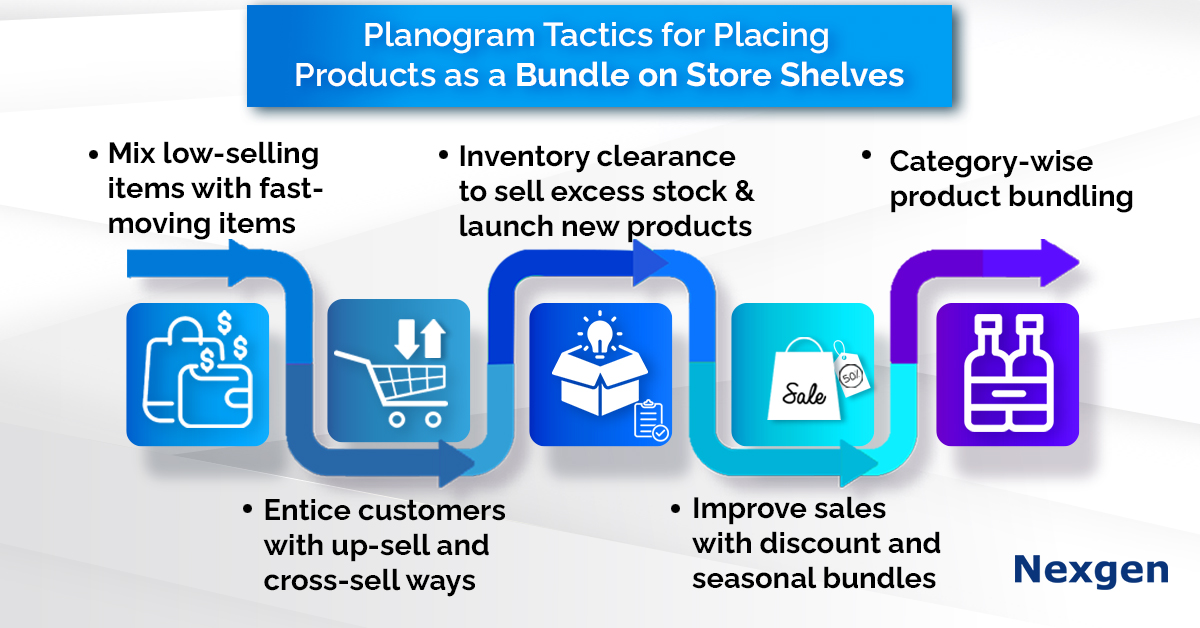Every retailer shares a common goal for their business: to earn more revenue and entice customers. The methods in which retailers go about achieving that goal vary, however. Some prefer to offer products that customers are interested in. While others turn into customer loyalty programs to increase sales. But, one of the common and easiest ways to help retailers achieve their goals is product bundling.
Product bundling is a common sales strategy implemented by retailers across the world. It is when a retailer packages complementary products as a group of items and places them on store shelves to encourage customers to buy more products. For example, instead of placing a pencil, a retailer can offer an eraser and sharpener as a bundle to purchase more than one product. Nowadays, retailers are using product bundling as a sales technique to sell off excess stock for re-stocking new products by offering discounts, or in a gift box or special wrapping to generate sales. Retailers can bundle products together as an upsell or cross-sell way. Upsells are used to persuade customers to upgrade the items in to a more expensive version. While cross-sells are for promoting customers to buy more products on impulse purchases. Therefore, products can be bundled together on shelves with the help of planogram software. Planogram is a visual merchandising tool, that helps retailers in planning and placing what category-wise products should be added to product bundling. So, the following are two types of product bundles that can boost sales with the planogram software.
- Pure bundles: It includes product/items sold exclusively for bundles. For example, the dishwasher is sold with a dish sponge, which a customer can only get when he purchases the whole set.
- Mixed bundles: It is used for selling products separately. For instance, skin- care kits. These kits are made up of several skin-care products, each of which can be purchased separately, but can be bundled together due to their complementary nature.

Planogram Tactics for Placing Products as a Bundle on Store Shelves
- Mix low-selling items with fast-moving ones: With this technique, retailers can easily sell their less popular items easily by motivating customers to pay more than they would spend on buying individual products. Low-selling items and fast-moving ones can be placed on shelves with the help of a planogram to entice more customers.
- Entice customers with a discount: Discount bundling can help create a favorable store image in the minds of customers. It makes them choose your store over other competitors. One of the best examples of discount bundling is buy-one-get-one-free (BOGO) bundles. Cross-selling products can be selected for BOGO bundles by placing discount labels on shelves to entice customers to try those items.
- Introduce seasonal bundles: Seasonal bundles are examples of product bundles to generate more sales. Bundles will get special attention during holidays, and festivities. For example, placing products cakes, cookies and chocolate together on Christmas Day can make customers buy them as a bundle rather than separately.
- Inventory clearance bundling to launch new products: Sometimes, the excess stock will remain on the store shelves for a long time. And retailers find it difficult to sell out those products in order to introduce new products. That is why inventory clearance bundling helps retailers to sell products at a lower price where customers will enjoy discounts most of the time.
Overview of Nexgen POG
Nexgen POG is a cloud-based, powerful planogram software for visual merchandising. It provides the retailer with a detailed assortment optimized planogram for better shelf planning and proper inventory management. It comes with an array of features, including customizable templates, bulk upload images, easy compliance, report generation and much more. Its interface is extremely user-friendly, and planograms can be designed by easily dragging and dropping the products. Nexgen POG is a cost-efficient planogramming tool, designed for creating store-specific planograms.
Get Your Free Trial Now!